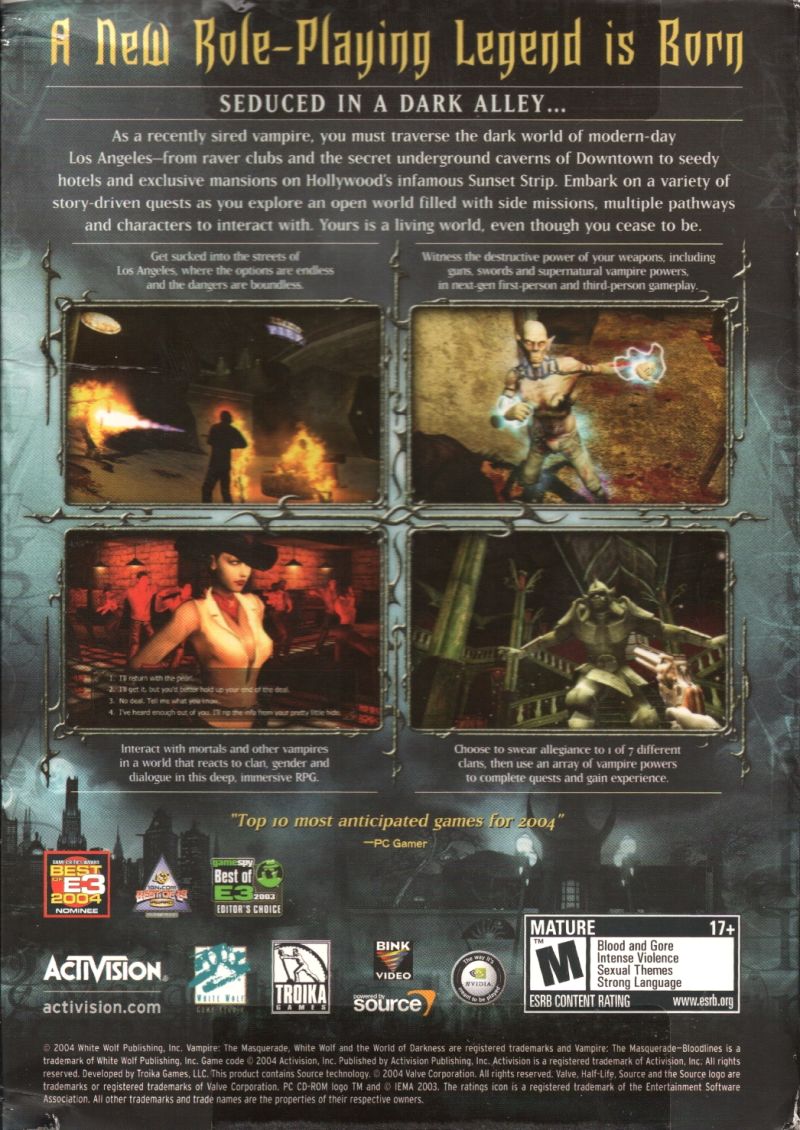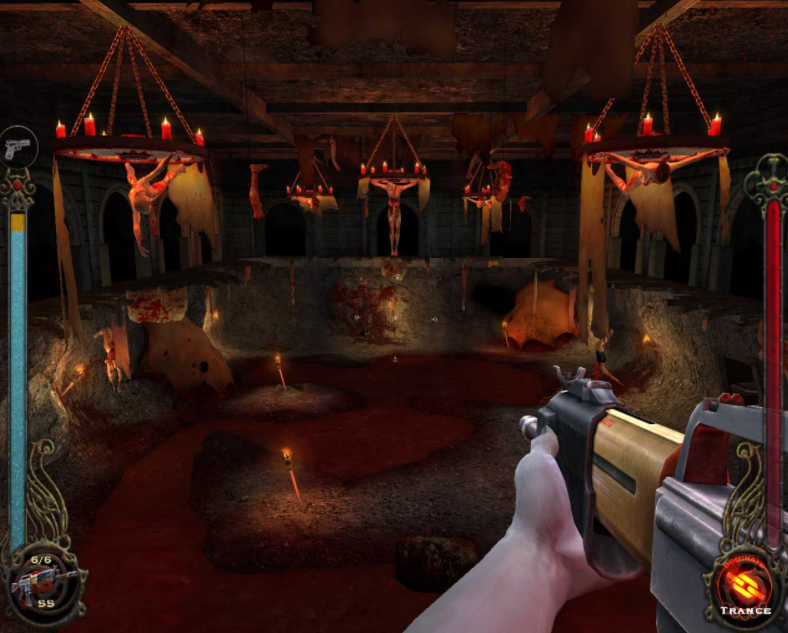One morning, a seemingly ordinary inhabitant of modern-day Los Angeles wakes up and discovers that he (or she) is dead. Well, not exactly dead, but turned into a vampire – “sired”, as the vampires themselves call it. Before the protagonist is able to reflect upon this new and unexpected form of existence, he is taken to a courtroom, where he gets acquainted with the Camarilla – an organization that preserves order among vampires. Apparently, the protagonist’s sire turned him into a vampire without permission, so Prince LaCroix, the head of the Los Angeles Camarilla branch, decides to execute both. The hero’s short vampire life would have come to an abrupt end if a mysterious person hadn’t stepped in and convinced the Prince to spare it. The Prince takes responsibility for the protagonist from now on and decides to test his abilities, sending him to Santa Monica. Before long the new vampire becomes involved in a net of intrigues between powerful organizations and vampire clans and must choose his own place in this terrifying new world.
Vampire: The Masquerade – Bloodlines is based on the pen-and-paper RPG Vampire: The Masquerade. In the beginning, the player creates the protagonist, choosing between vampire clans, each with its own unique abilities and disciplines: Brujah vampires are suitable for melee fighting, Tremeres can cast spells, etc. In some cases the choice of a clan greatly changes subsequent gameplay: for example, Malkavians are insane and will therefore have completely different surreal dialogue choices; Nosferatu are so ugly that they can’t pass for humans and will have to travel through underground paths throughout the game, etc.
The main character gains experience points only for completing quests, not for killing enemies. Many side quests are available during the course of the game. Experience points can be manually allocated to raise the protagonist’s attributes, as well as improve various vampire feats. The player can make the main character stronger in combat, proficient in computer hacking or stealth, more powerful in vampire disciplines, more attractive, more intimidating, and so on.
Combat in the game is action-based. The protagonist can fight unarmed, use melee weapons and firearms, or employ special vampire abilities. Melee combat is viewed from the third-person perspective, but the view switches to first-person if the main character is using a gun. Blood is used to activate the vampire disciplines, working similarly to magic points in other games. It can be replenished by feeding on certain types of enemies.
The protagonist can also feed on innocent humans, though there are repercussions for that. The rules of the Masquerade forbid vampires to reveal their true nature to humans. Openly feeding on humans violates the Masquerade; five Masquerade violations lead to an instant Game Over. Feeding on humans with no witnesses present does not violate the Masquerade; however, killing an innocent human in the process alerts the authorities and causes the player character to lose some of his or her humanity. Losing too much humanity results in the protagonist becoming more and more susceptible to frenzy, eventually turning into an uncontrolled beast.
Many quests can be completed in different ways – brute force, stealth, diplomacy, intimidation, etc., depending on the preferred style of play and the main character’s attributes. The player will also have to decide which faction the protagonist should side with throughout the game. Eventually, the player’s choices will branch the storyline, leading it to one of the five possible endings.
Cover Art:
Screenshots:





